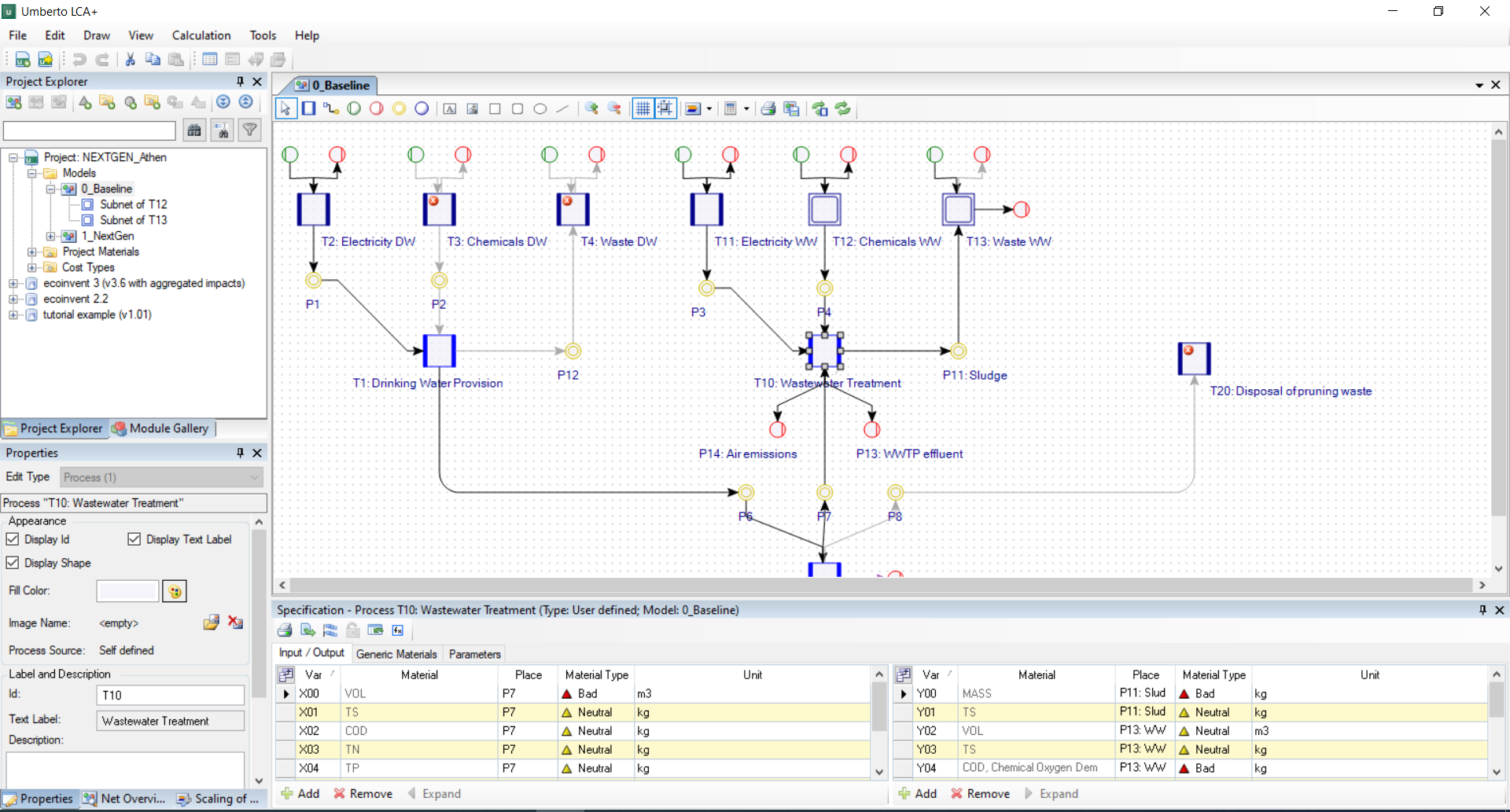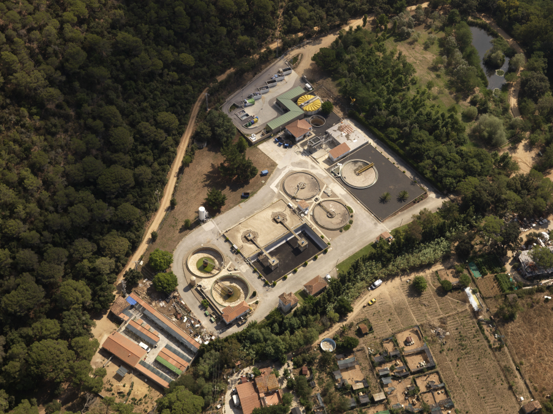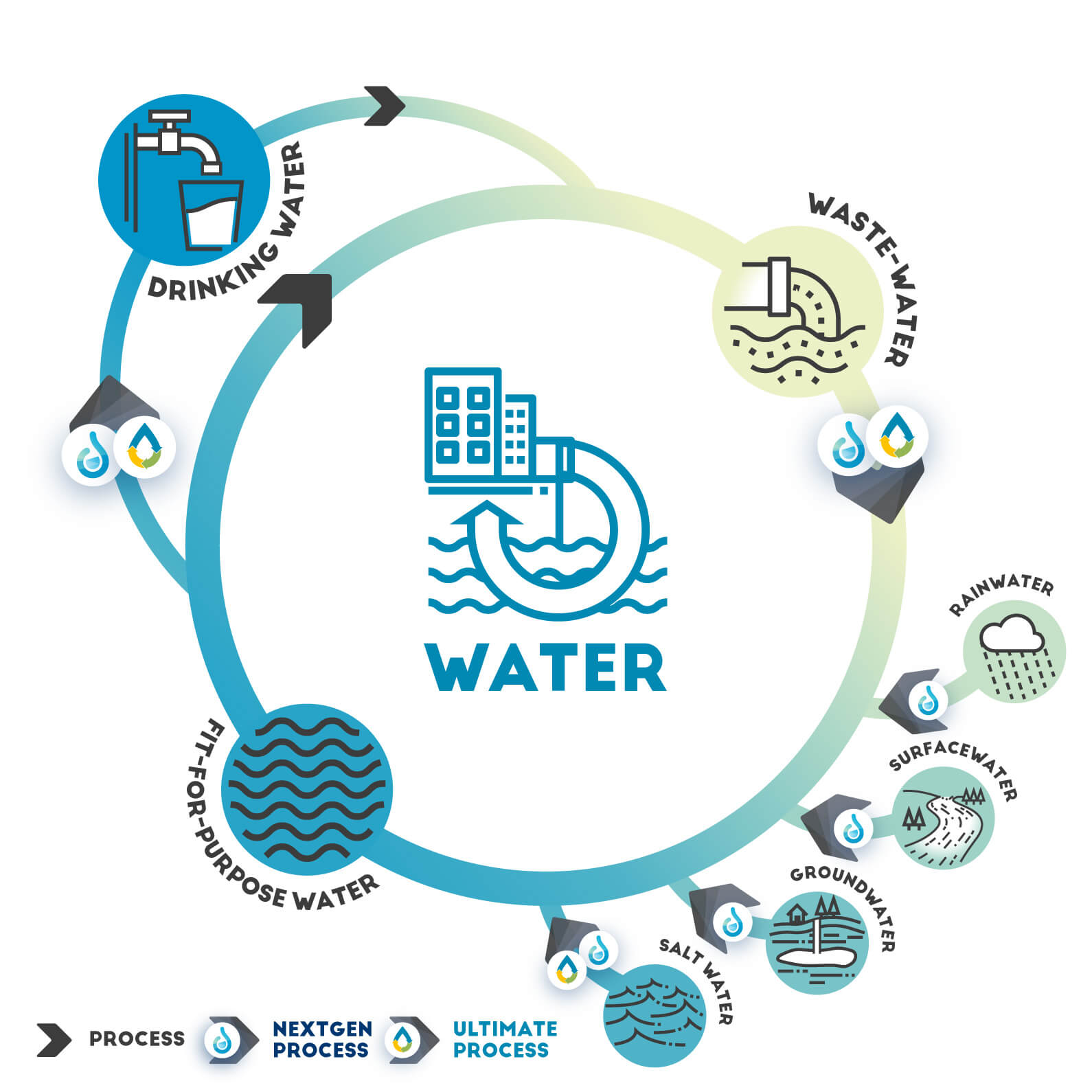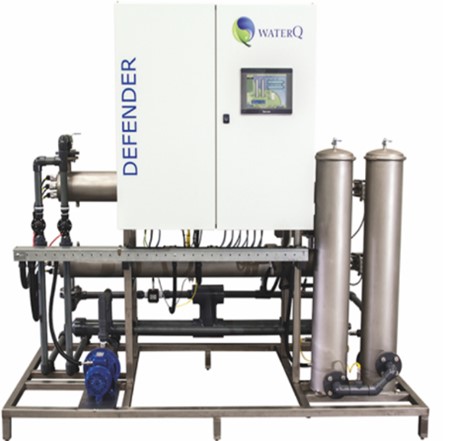Description
Costa Brava is a region with high seasonal water demand and frequent water scarcity episodes, which can also cause saltwater intrusion. It is one of the first areas applying water reuse in Europe. In total, 14 full-scale tertiary treatments provide 4 Mm³/year (2016) for agricultural irrigation, environmental uses, non-potable urban uses and, recently, indirect potable reuse.
The Tossa de Mar WWTP works with one-line tertiary treatment with an average flow rate of 7.4 m³/h, ranging from 4.5 m3/h during the winter period (values from 2018) to a maximum of 11 m3/h reached in summer. Mainly during the summer period, both the number of tourists and the wastewater flow rate to be treated increases: thus, a part of the effluent from the secondary treatment is sequentially treated by its tertiary treatment (flocculation/coagulation, pre-chlorination, sand filtration and disinfection process with UV lamps and chlorination).
Nowadays the effluent from tertiary system is used for agricultural irrigation and environmental and non-potable water uses. The excess water flows to the sea. Due to the increase on water demand, especially during summer period, it is bedded on improving the final quality of regenerated water for broadening its application in more restrictive reuses such as private garden irrigation or indirect potable reuse. This goal is pursued by NextGen pilot plant. In the case study, a pilot plant integrated by ultrafiltration (UF) and nanofiltration (NF) modules fitted with RO regenerated membranes was installed in December 2019 at the WWTP of Tossa de Mar. The pilot plant was allocated after the sand filter of the tertiary treatment of the WWTP. It will operate for 1 year in (2020-2021). During this period, the operation conditions of this new system will be evaluated, as well as the quality of the water obtained to be used for the irrigation of private gardens.
Applied technologies
Technology performance and best practices
Ultrafiltration and nanofiltration with end-of-life RO regenerated membranes
The main objective of the Costa Brava (ES) case study was to demonstrate the performance of regenerated end-of-life RO membranes with a porosity of NF. The water quality obtained meet the quality required for private irrigation according to RD1620/2007 (Spanish legislation for water reuse) being able to produce 2 m3/h and to remove > 75% of the salinity, about 80% of trace organic compounds (such as pesticides, pharmaceuticals, endocrine disruptors, …), and > 95% of turbidity and TSS. Remarkably, the energy consumption of NF membranes was lower than the consumption of commercial NF membranes, i.e. 0.9 – 1 kWh/m3 compared to 2 kWh/m3. Detailed results can be found in D1.3.
Outcome of assessments
Life cycle assessment
Water reuse is associated with environmental savings in most life-cycle impact assessment categories. The savings are depending on the respective water resource and its energy intensity in production that is replaced by reclaimed water. The novel scheme using regenerated membranes is able to provide a higher level of water quality compared to the current tertiary treatment expanding water reuse to private irrigation. Further LCA results can be found in D2.1.
Life cycle costing & Cost effectiveness analysis
Three assessed water reuse options, namely 1 tertiary UV disinfection, 2 tertiary UF/NF membrane filtration and 3 UF/NF combined with upgraded secondary treatment are all more expensive than the current water imports from the Tordera valley. However, the groundwater tables are under stress and the consortium Brava needs to rely less on groundwater for water supply. The tertiary UF/NF should be combined with improved secondary treatment of nitrogen (option 3) to reach sufficient quality for infiltration for potable reuse. Infiltration, in contrast to reuse for irrigation, makes all year water treatment possible with much larger volumes and lower specific cost. Further LCC and CEA results can be found in D2.2.
Quantitative microbial risk assessment
For water reuse case study Tossa del Mar, the NextGen project investigated whether previously used reverse osmosis (RO) membranes can be recycled and reused as UF-NF membranes. The produced water should be used for public irrigation. The QMRA tool was used to explore and compare different treatment configurations and especially the NextGen configuration in regards to their ability to achieve predefined health targets. More details are shown in D2.1.
Legislation and policy recommendations
In NextGen, we analysed the policy and regulatory landscape to identify relevant opportunities for and barriers to upscaling circular economy in the water sector. Our recommendations, targeted at the revised Urban Wastewater Treatment Directive, are summarised in our policy brief. These recommendations focus on creating meaningful incentives and policy drivers towards circular systems (e.g., through energy and carbon neutrality targets, and additional guidance on water recycling) and simplifying the route to market for recovered products (e.g., fertilisers and other materials). See also our policy brief.
Applied product

NEXTGEN + ULTIMATE Life Cycle Assessment
Life Cycle Assessment is a standardized framework (ISO 14040) for assessing the potential environmental impacts of a pr…





